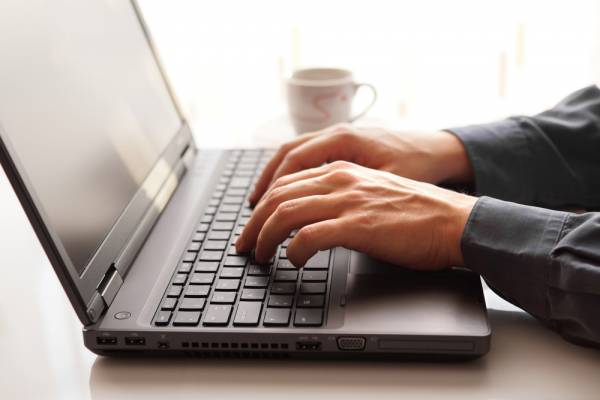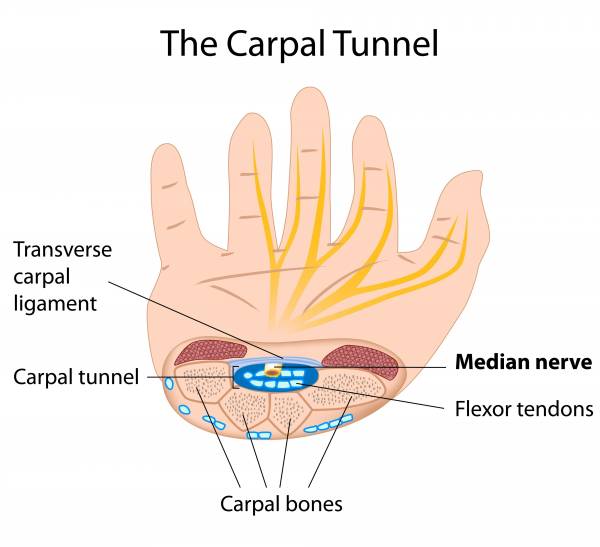Grip strength is an issue that can plague many an athlete, and Pulse Beat Fit has covered how to regain strength in your grip when the issue is straight-up weakness (with articles by many of the smart and thoughtful strength and conditioning coaches who make up the Pulse Beat Fit crew).
So, I figured I’d take a peek at the issue through my manual therapist lens and talk about the opposite issue – when your grip is weak from overuse and more.
You Have No Finger Muscles
The important foundational piece to know is that there are no finger muscles. True story! There is not a single muscle that only attaches on your finger itself and whose job it is to “just” move your finger. All the muscles that move the fingers live farther upstream in the palm and forearm. This means that to take a look at grip strength, we’re talking mainly about what’s going on in our forearms.
The other interesting and important thing to look at is how much the way we use our bodies has changed in the last forty years of human history. Sorry. I have to pause here – this is pretty fascinating to me. Modern humans have been kicking around on the planet for around 200,000 years, and for only the last forty of them have we developed an interesting new physical habit. That habit being that our fingers (and, therefore, hands and forearms) increasingly run the show. Ever since home computers became a part of everyday life, we spend a significantly larger portion of our time sitting (or standing) with our hands out in front of us T-rex style, moving our fingers rapidly along a keyboard.
This new movement that we now do for large quantities of time asks the fingers to move very quickly (unless you’re still a hunt-and-peck type), while exerting little force, and in only one main direction, which is down on the keys. We don’t get a lot of the grip strengthening that is a benefit of lifting or carrying, and we don’t get a lot of movement in our hands out of the “claw” shape.

So here are a few of the things, in our typing-heavy and lifting-carrying-light culture, that can also cause weakness of the grip:
Osteoarthritis
Osteoarthritis in the hand most commonly occurs at the place where the thumb joins the hand (helloooooo texting!). Pain and swelling here can make it difficult to appropriately grip things.
Tendinitis
This is common these days and is almost always a result of repetitive stress injuries. As in, typing can frequently cause it, but it is also seen in sports like lifting, tennis, and golf (hence the terms “tennis elbow” and “golfer’s elbow,” which are two common forms of forearm tendinitis). When the tendons in the forearm get inflamed and swell, there will be pain locally at the site of the unhappy tendon. So if you have pain at the elbow, your grip strength issues might be related to tendinitis.
Carpal Tunnel Syndrome
This is another common overuse injury frequently brought on by typing. People with carpal tunnel syndrome are experiencing a problem with their median nerve, which is under pressure from the surrounding soft tissues. If you are dealing with any numbness or tingling (including waking up with those symptoms), dropping objects, having difficulty with fine motor skills, as well as grip weakness, you may want to look into whether the median nerve is the culprit and get some good manual therapy to address it.

Nutritional Deficiency and Low Thyroid
Moving on from looking just at the forearms, these are two larger systemic reasons why people can often have weak grip strength. I’m lumping these two together simply because they are in the “other” category, but they don’t necessarily show up together. You can have excellent nutrition and still have low thyroid, and since we’re living at a time of record rates of thyroid conditions (especially in women, but also in men), it might be worth checking out. I highly recommend Dr. Sara Gottfried’s book The Hormone Cure if you think this might be your issue.
How to Fix Your Dreaded Claw-Hands
Whew. Okay, swinging back to the idea of our new normal claw-hand shape that we make for most of the day. This default position can shorten up all the tissue in our hands and forearms leaving us susceptible to all but the nutritional and endocrine reasons for grip strength that I listed above.
Fortunately, I recently attended a workshop given by my colleague Lillee Chandra, a massage therapist and Yoga Tune Up teacher, in which she primarily addressed this issue of the claw. She had hours worth of great content addressing this in a really holistic way (i.e. attending to the patterns elsewhere in the body that lead to this issue), which I can’t get to you in full today. However, she did agree to do a great video on one of the more delicious pieces of self-care that she created for the workshop. Thank you Lillee!
Do not be fooled by how simple this intervention looks. Pay attention to the slowness and nuance that she stretches each finger with, do it at home, and tell me if you aren’t having some pretty enlightening moments about un-clawing your paws.
Photos courtesy of Shutterstock.






